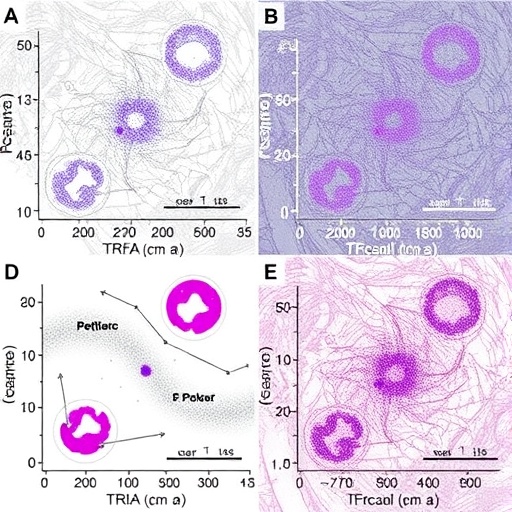A new study in JNCI Cancer Spectrum finds that dramatic increases in cancer survival in adolescents and young adults are undermined by continuing disparities by race, ethnicity, and socioeconomic status. The patterns here suggest that most of the recent survival increases in this age group were driven by improvements in treatments for HIV/AIDS and related cancers.
In a 2006 report, Closing the Gap, the National Cancer Institute Progress Review Group reported that from 1977 to 1997, adolescents and young adults (people between 15 and 39) demonstrated an alarming lack of improvement in cancer survival compared with other age groups.
The report served as a call to action. Thereafter several groups worked to improve outcomes for adolescents and young adults with cancer. These efforts included specific research initiatives and establishing an oncology discipline committee for this age group in the Children’s Oncology Group and in other adult oncology cooperative groups.
This latest study looking at the more recent time period from 1988-2014 shows that among 30 to 34 year olds with cancer, the 5- year survival rate increased by 20.6% in males and 4.2% in females from 1988-2000 to 2001-2014. Among 35 to 39 year olds the 5-year survival rate increased by 18.9% in males and 4.2% in females. Among males of all ages, survival improvement was greatest for adolescents and young adults.
This study also examined the changes in survival among adolescents and young adults over two time periods: 1988-2000 and 2001-2014. There were no differences in survival between the time periods for adolescents and young adults with bone/soft tissue sarcoma, ovarian carcinoma, ovarian germ cell tumor, stomach cancer, testicular cancer, thyroid cancer, and uterine cancer. Cancer types showing the greatest improvement in survival between the two time periods were Kaposi sarcoma, chronic myeloid leukemia, and non-Hodgkin lymphoma. There were no cancer types that had worse survival after adjusting for cancer and demographic factors. Both Kaposi sarcoma and non-Hodgkin lymphoma are cancers that disproportionately affect people with HIV/AIDS.
Subgroups of adolescents and young adults that showed worsening trends in survival between the two time periods included black people with bone/soft tissue sarcoma, 20 to 24 year old women with cervical cancer, and poor adolescents and young adults with cervical cancer. The survival improvements in Kaposi sarcoma and non-Hodgkin lymphoma were more evident in those from higher socioeconomic groups. In addition, survival improvements in brain cancer, colorectal cancer, melanoma, stomach cancer, and testicular cancer appear to be greater among whites than among other racial/ethnic groups.
For race/ethnicity, compared to white adolescents and young adults, black patients had the highest risk of dying for all cancers combined, a disparity present in almost every cancer type, followed by Asian-Pacific Islanders and Latinos. For every racial/ethnic minority group compared to whites, survival disparities for all cancers combined worsened over time. For all cancers, poorer patients had an increased risk of death compared to those of higher socioeconomic status; and like the racial/ethnic disparities, this risk increased over time. The largest risk factor for death in adolescents and young adults was stage of disease, with those with advanced stage cancer having the worst outcomes.
It appears the negative survival improvement gap observed in this age group from 1977 to 1997 was essentially driven by the rise and height of HIV/AIDs related cancers in males. Similarly, the dramatic survival improvement researchers here found among adolescents and young adults in this study from 1988 to 2014, especially among males, was the result of the baseline survival corresponding to the height of the HIV/AIDS epidemic. The large survival improvement essentially resulted from its fall.
Even though the historical gap in survival improvement within this age group has largely been closed with the advent of effective treatment for HIV/AIDS, adolescents and young adults are a vulnerable population with unique challenges.
“This highlights that continued research is required in this vulnerable age group,” said the paper’s lead author, Diana Moke. “This research is necessary to improve survival in certain cancer types that have not shown any recent progress, find novel therapies for advanced stage disease in all cancer types, and ensure that survival improvements reach all young patients, regardless of race/ethnicity or socioeconomic status.”
###
The paper “Emerging Cancer Survival Trends, Disparities, and Priorities in Adolescents and Young Adults: A California Cancer Registry-based Study” is available (at midnight EST on June 12, 2019) at: https:/
Direct correspondence to:
Diana J. Moke
Children’s Center for Cancer and Blood Diseases
Children’s Hospital Los Angeles
4650 Sunset Blvd, MS#54
Los Angeles, CA 90027
[email protected]
To request a copy of the study, please contact:
Daniel Luzer
[email protected]
Full funding information: Diana J. Moke was supported by grant from the National Institutes of Health. The collection of cancer incidence data used in this study was supported by the California Department of Public Health; Centers for Disease Control and Prevention’s National Program of Cancer Registries, the National Cancer Institute’s Surveillance, Epidemiology and End Results Program awarded to the Cancer Prevention Institute of California, contract awarded to the University of Southern California, and contract awarded to the Public Health Institute.
Media Contact
Daniel Luzer
[email protected]
http://dx.



